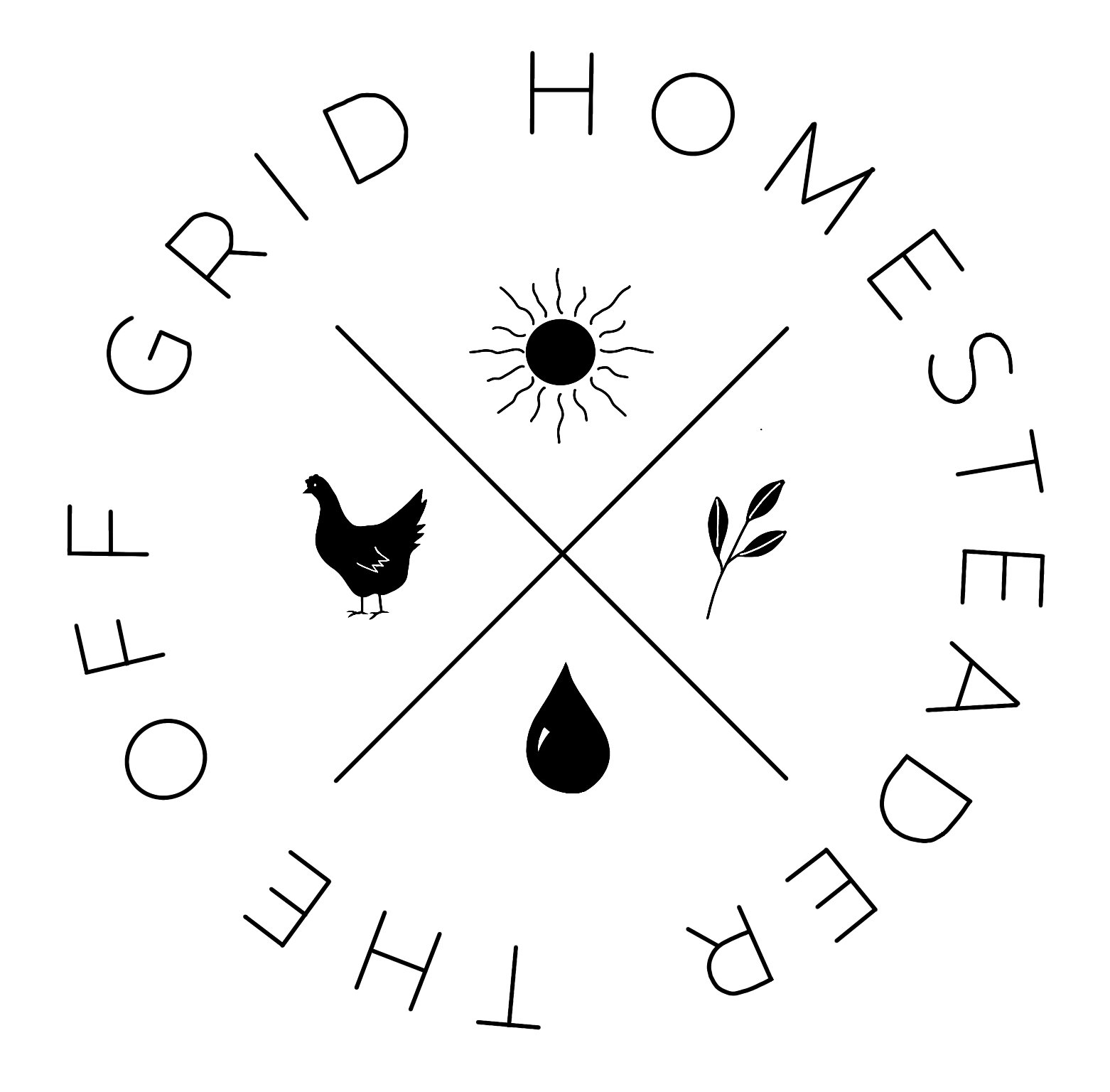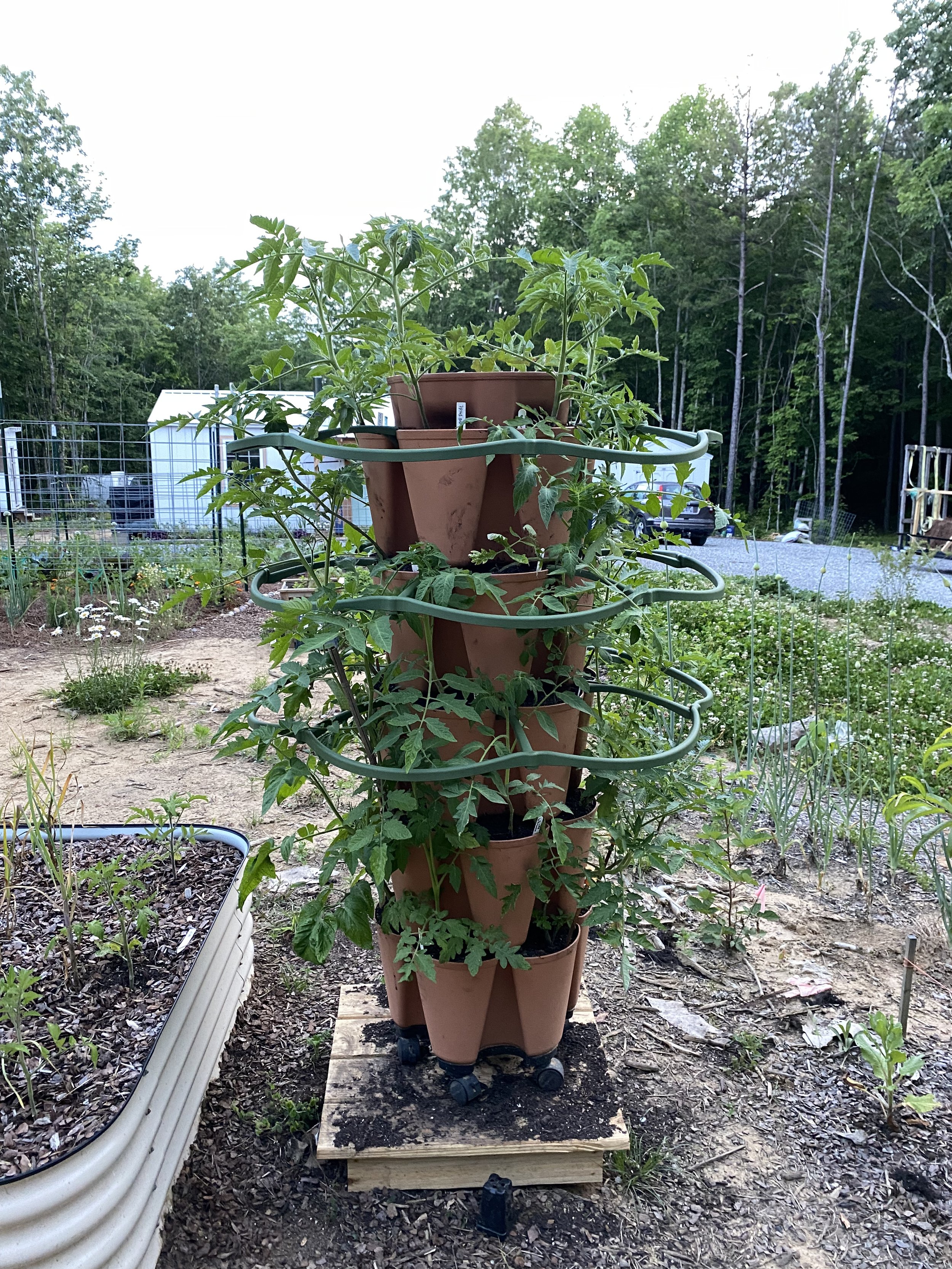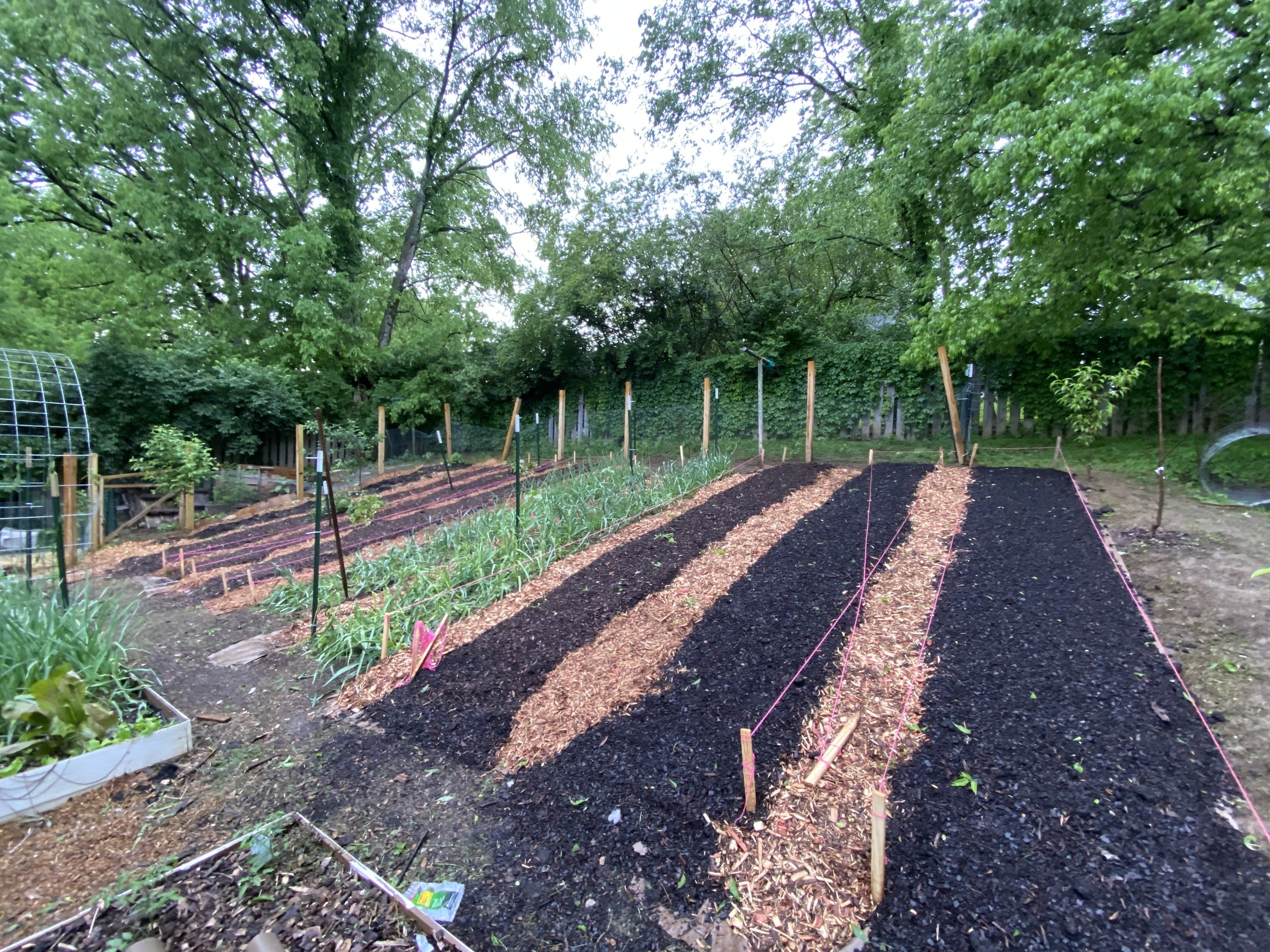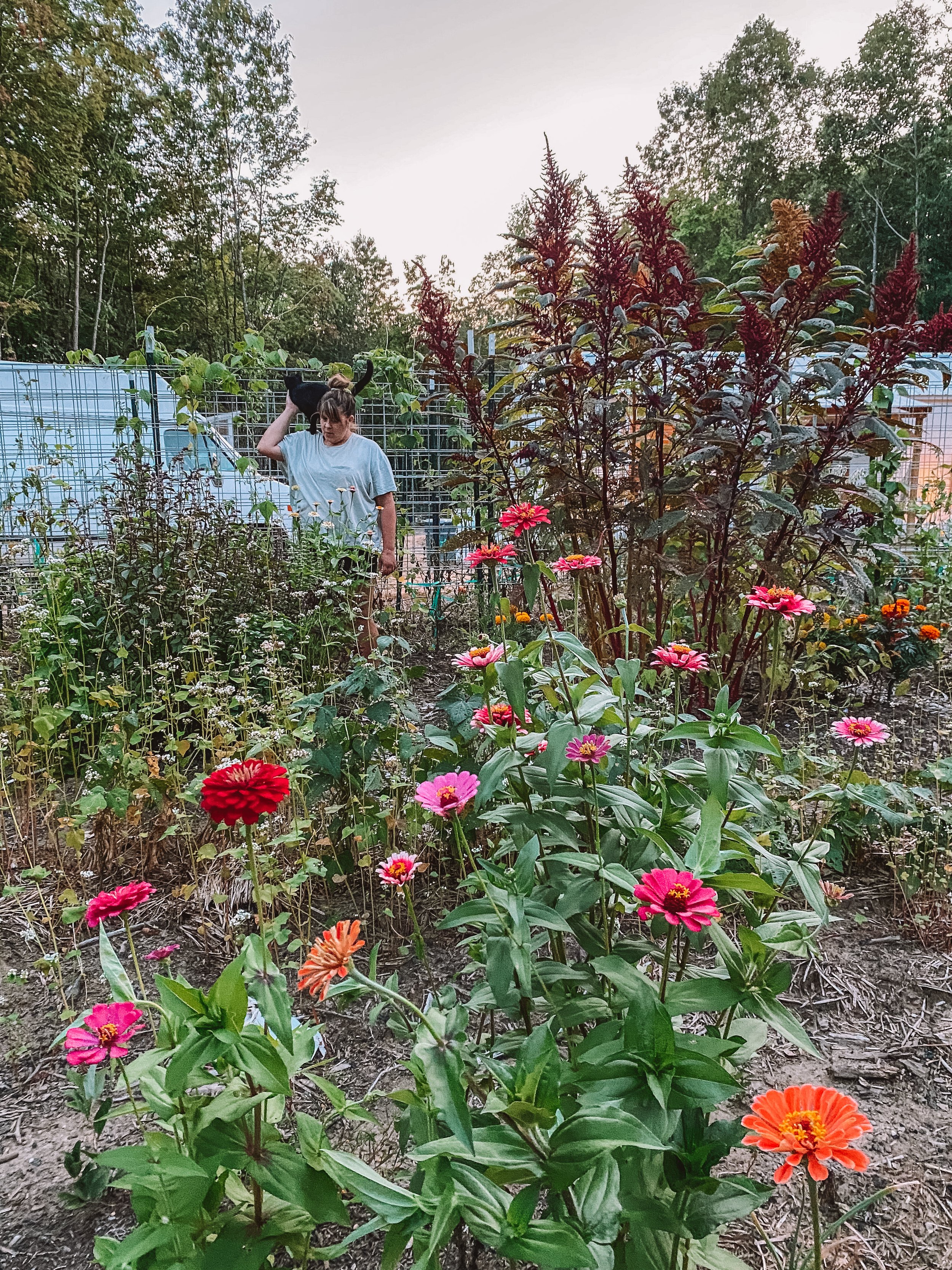10 Tips For Lazy Gardeners
We’ve all seen the beautiful gardens on Instagram that are dreamy and inspirational. Before you know it you are ordering garden beds and buying a bunch of veggie starts and flowers. For me, seeing pictures of our old potager garden motivates me to continue improving our new one because I miss that garden dearly. The problem with all these beautiful gardens is that they take a lot of work.
What if you want a garden and don’t have that much time or you simply aren’t that motivated to do the work? You might even be fully committed to growing your own produce and flowers but it all seems so overwhelming. Below I will give you 10 tips on how to make gardening easier.
Other posts you may like:
Lower your expectations and start small. Those beautiful weed-free gardens take a lot of time to maintain. Pick the flowers, fruits and vegetables you love the most and don’t grow food you don’t eat regularly. If you start big and have the expectation of a perfect and beautifully maintained garden, you could be setting yourself up for failure. The best way to stick to gardening long-term is to start small.
Grow what is suitable for your growing area and season. Yes you can make some things work that aren’t suited for your area but we’re trying to be lazy gardeners. Ask around for what flowers, fruits, and vegetables are easy to grow in your area. For example, yes apples and peaches can grow in my climate but they are not for lazy gardeners and require a ton of maintenance. A crop like lettuce is simple to grow and works in most climates. We talk about how to grow an endless supply here.
Use permaculture principles. Permaculture by definition is the development of agriculture ecosystems intended to be sustainable and self-sufficient. Unlike traditional gardening methods which require a ton of unnatural inputs and work, permaculture is designed to work with nature. It can take years to get a permaculture ecosystem going but the ultimate goal is to let nature do what it does best.
Plant in raised beds or containers. Planting in raised beds or containers is a great option for lazy gardeners, as it requires less maintenance than a traditional garden bed. Raised beds are great, as they require less bending and kneeling than traditional garden beds. Plus, they can help to improve soil drainage and prevent soil compaction. You can control the type of soil in a raised bed to ensure your plants have the best chance to thrive. There aren’t as many weeds in raised beds and because the soil isn’t compact, they are easier to pull out when you do get the occasional weed. We love the Birdies Beds and the Greenstalk as raised bed and container options. However, if you are want to try to build a raised garden bed for free, you can see how we built one of those here.
Try no-till gardening. This approach is great if raised beds aren’t an option due to budget constraints. No-till gardening is a low-maintenance approach that involves leaving the soil undisturbed to promote soil health and natural nutrient cycling. By avoiding tilling and digging, you can reduce the amount of time and effort required to maintain your garden while still growing healthy plants. Some no-till gardening techniques include using mulch, compost, and cover crops to build healthy soil and suppress weeds. There is expanisve amounts of information on how to no-till garden.
Use cover crops. Cover crops are a low-maintenance way to improve soil health and suppress weeds. By planting cover crops such as clover, buckwheat, or rye, you can improve soil structure and fertility, reduce erosion, and increase organic matter in the soil. Plus, cover crops can help to smother weeds, reducing the need for manual weeding.
Group plants with similar needs. To save time and effort, group plants with similar needs together in your garden. This will allow you to water, fertilize, and prune them more efficiently, as you won't have to cater to each plant individually. For example, you could group sun-loving plants in one area and shade-loving plants in another, or group plants that require frequent watering together so you can easily water them all at once. By grouping your plants strategically, you can save time and still enjoy a beautiful and productive garden.
Mulch your garden bed. Mulching is a simple technique that can save time and effort in the long run. A layer of mulch on your garden beds can help to suppress weeds, retain moisture, and keep your soil healthy. Mini pine nuggets or pine straw are some of our favorite options for mulch. You can also get free wood chips from services like Chip Drop. Don’t used the dyed mulch you see in a lot of big box stores. When they break down, they add nothing good to the soil.
Use automatic irrigation systems. Save yourself the trouble of constantly watering your plants by investing in an automatic irrigation system. You can set the system to water your plants at regular intervals, so you won't have to worry about it. This is definitely a bigger investment up front but will save you a lot of time and reduce the amount of water you use in your garden.
Try foraging for wild edibles. If you don’t have the space or the time to dedicate to being a full-time gardener, foraging is a fun and easy way to supplement your diet with fresh, nutrient-dense foods. Many wild plants are easy to identify and require little or no maintenance, making them a great option for lazy gardeners. Some examples of wild edibles include dandelion greens, chickweed, and wild berries. Just be sure to do your research and only forage for plants that are safe to eat and have not been exposed to pesticides or other toxins. With a little bit of knowledge and caution, foraging can be a fun and rewarding way to connect with nature and enjoy delicious, healthy foods.
Gardening is incredibly rewarding and if you set up proper systems you can take a lot of the work out of gardening. When you go pick that first flower for a bouquet or make a salad from your garden, you will get to experience the true joy of growing something right in your backyard. However, the bigger the garden the more the work, so start small and see if gardening is really for you.











